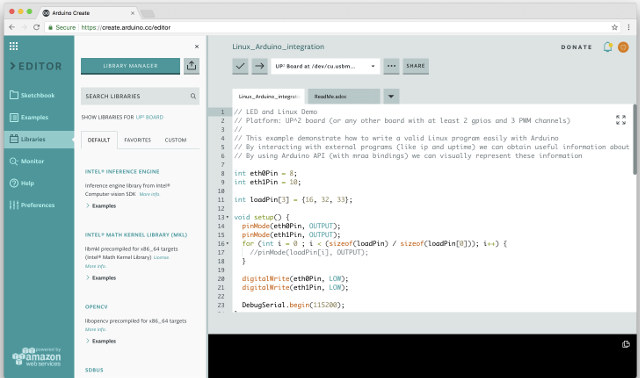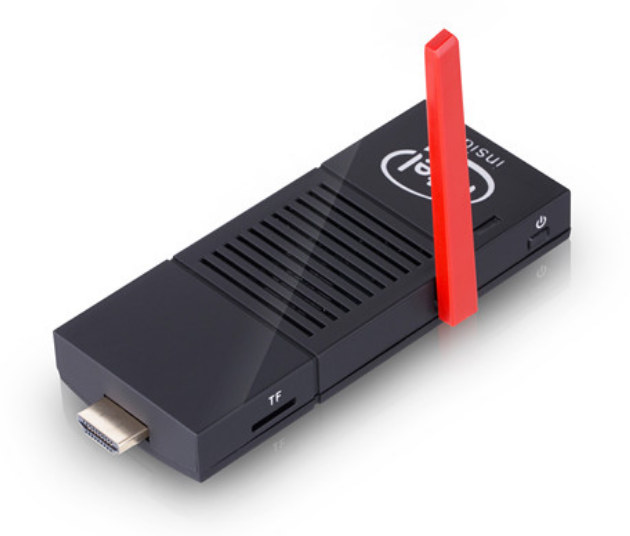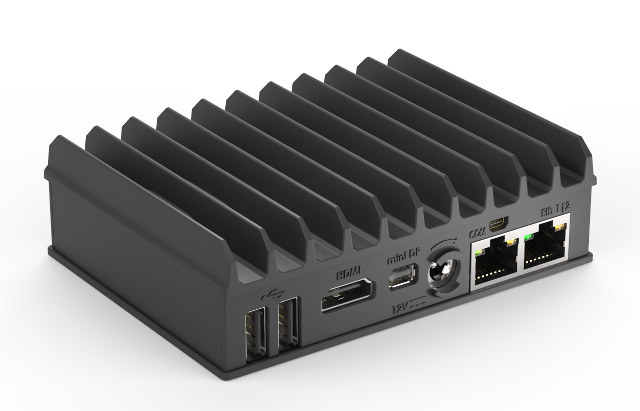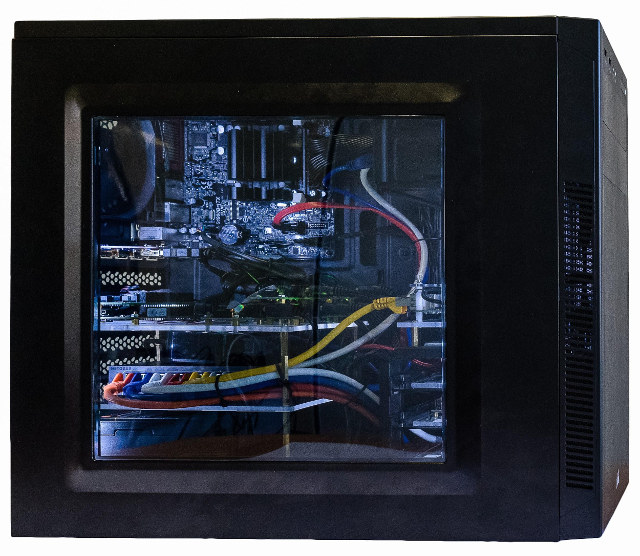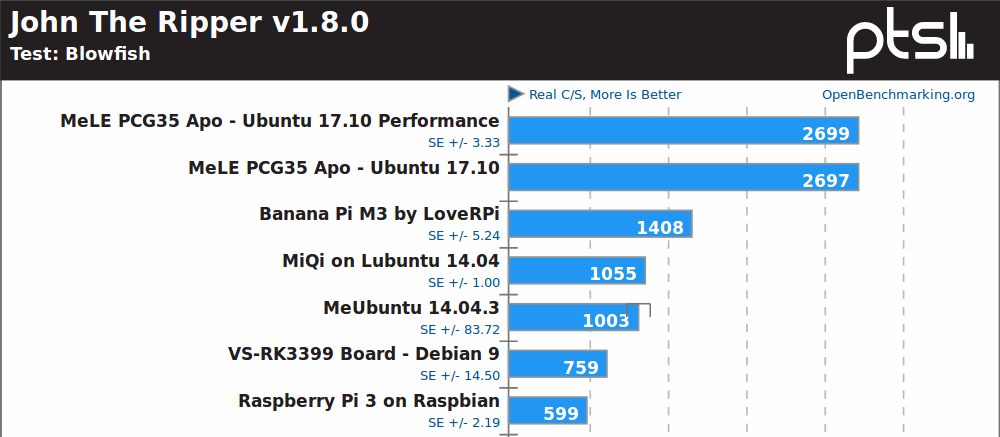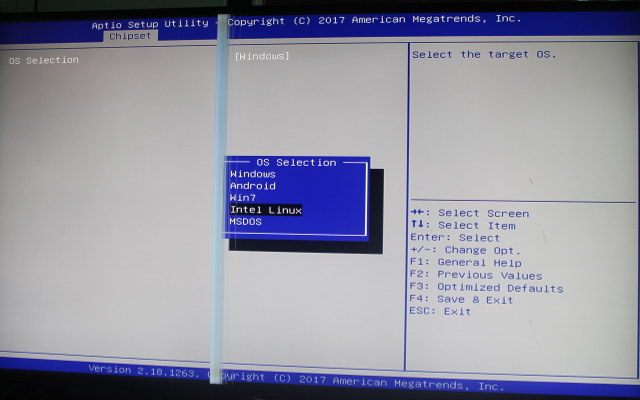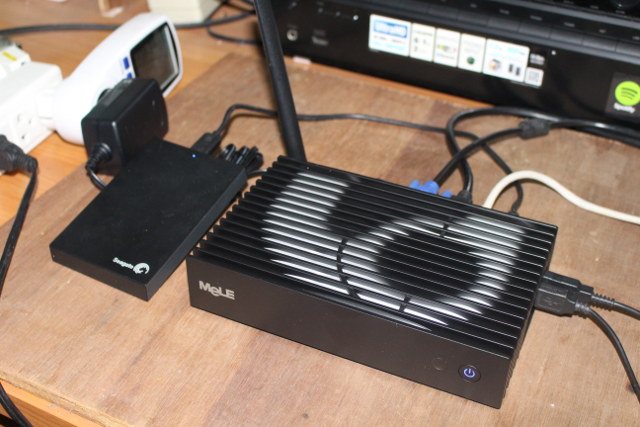Most people are used to program Arduino compatible boards with the Arduino IDE that they’ve installed in their Windows/Linux/Mac OS computer, and manage everything locally. But Arduino introduced Arduino Create last year, which includes Arduino Web Editor allowing you to perform the same tasks in your web browser, and save your files in the cloud. The company has now added Linux support to Arduino Create so that users can now program their Linux devices as if they were regular Arduino boards, and easily deploy IoT applications with integrated cloud services. The initial release has been sponsored by Intel, and currently supports X86/X86_64 boards, but other hardware architectures will be supported in the coming month. In the meantime, AAEON UP2 board is the best platform to get started, as a complete getting started guide is available for the platform. But other mini PCs such as Intel NUC, Dell Wyse, Gigabyte GB-BXT are […]
$100 CA98 TV Stick is Powered by Intel Celeron N3350 Processor
We’ve already seen Apollo Lake TV sticks such as MeegoPad T11, ECDREAM A9, or BBen MN10. Linuxium reviewed ECDREAM A9 model on this blog, and found out that Windows 10 (pre-installed), and Ubuntu 17.04 operating systems ran reasonably well with two main downsides: the relatively slow eMMC flash, and the noisy fan. Another issue is the size, as with 58mm width, it looks more an hybrid between a mini PC and a TV stick, than an actual TV stick. Another Apollo Lake TV/PC stick is now available with CA98 (aka CSA98) found on Aliexpress for $100, as well as on Shenzhen Indo Technology’s Alibaba page. CA98 specifications: SoC – Intel Celeron N3350 dual core processor @ 1.1 GHz / 2.4 GHz, 12 EU Intel HD graphics 500 @ 200 MHz / 650 MHz; 6W TDP System Memory – 2GB LPDDR3 Storage – 32GB eMMC flash (optional 16, 64 or 128GB) […]
Compulab Fitlet2 Fanless Apollo Lake Mini PC is Designed for Industrial IoT Gateways
Compulab Fitlet mini PCs were introduced in January 2015 with AMD Mullins processors, namely AMD A4 Micro-6400T or E1 Micro-6200T both of which including Radeon graphics, and supporting up to 8GB RAM, mSATA, up to two HDMI port, up to four Gigabit Ethernet ports. The company has now launched Fitlet2 mini PCs, replacing AMD processors by Intel Apollo Lake SoCs, supporting up to 16 GB RAM, and designed for “demanding IoT applications” with support for wide temperature range, and long term support and warranty. Fitlet2 specifications: SoC (from a choice among three) Intel Atom x7-E3950 quad core processor @ 1.6 / 2.0 GHz with 18 EU HD graphics; 12W TDP Intel Atom x5-E3930 dual core processor @ 1.3 / 1.8 GHz with 12 EU HD graphics; 6.5W TDP Intel Celeron J3455 quad core processor @ 1.5 / 2.2 GHz with 12 EU HD graphics; 10W TDP System Memory – 1x […]
Lab in a Box Concept Embeds x86 Server and 6 ARM Boards into a PC Case for Automated Software Testing
The Linux kernel now has about 20 millions line of code, Arm has hundreds of licensees making thousands of processors and micro-controllers, which end up in maybe hundreds of thousands of different designs, many of which are not using Linux, but for those that do, Linux must be tested to make sure it works. The same stands true for any large software used on multiple hardware platforms. Manual testing is one way to do it, but it’s time consuming and expensive, so there are software and hardware continuous integration solutions to automate testing such as Linaro LAVA (Linaro Automated Validation Architecture), KernelCI automated Linux kernel testing, and Automotive Grade Linux CIAT that automatically test incoming patch series. Both CIAT and KernelCI focus on Linux, and rely on LAVA, with KernelCI leveraging hardware contributed by the community, and proven to be effective as since it’s been implemented, failed build configs dropped […]
Linux Benchmarks – Intel J3455 Apollo Lake vs Z3735F Bay Trail vs RK3399 and Other ARM Platforms
Since I’ve just installed Ubuntu 17.10 on MeLE PCG35 Apo, I decided I should also run some benchmarks comparing with other ARM and x86 Linux platforms I’ve tested in the past.I was particularly interested to compare the performance of Intel Apollo Lake processors (Celeron J3455 in this case) against higher end ARM processors like Rockchip RK3399 (2x A72, 4x A53) since systems have a similar price (~$150+), as well as against the older Bay Trail processor to see the progress achieved over the last 2 to 3 years. To do so, I used Phoronix Benchmark Suite against Videostrong VS-RK3399 results (RK3399 development board):
|
1 2 3 4 |
sudo apt install php-cli php-gd php-xml php-zip wget http://phoronix-test-suite.com/releases/repo/pts.debian/files/phoronix-test-suite_7.4.0_all.deb sudo dpkg -i phoronix-test-suite_7.4.0_all.deb phoronix-test-suite benchmark 1709271-TY-1704029RI26 |
The benchmark first issued a warning about “powersave” governor, but I still went ahead, and once completed I change it to “performance” governor:
|
1 2 |
sudo apt install cpufrequtils sudo cpufreq-set -r -g performance |
…and ran the tests again. All results are available on OpenBenchmarking. Let’s address the governor results first. cpufreq-info reports that powersave governor […]
MeLE PCG35 Apo Apollo Lake Mini PC Review – Part 3: Ubuntu 17.10
I completed the review of MeLE PCG35 Apo with Windows 10 Home a few days ago, and as promised, I’ve now installed the freshly released Ubuntu 17.10 in the Intel Celeron J3455 “Apollo Lake” mini PC. I’ll start by shortly explaining the step to install Ubuntu 17.10 in the M.2 slot, although you could also install it to the internal eMMC flash replacing Windows 10, then show what works and what does, and finally include a video reproducing the tests I usually do in Windows 10. How to Install Linux in MeLE PCG35 Apo This partially follows the procedure I used to run (not install) Ubuntu 16.04 on MeLE PCG03 Apo mini PC. First you’ll need to download the ISO of your choice (ubuntu-17.10-desktop-am64.iso in my case), and prepare a bootable USB flash drive with the software of your choice be it Rufus, Startup Disk Creator or others. I did […]
MeLE PCG35 Apo Mini PC Review – Part 2: Windows 10 Home
Laptops and mini PCs powered by the new generation of Intel Gemini Lake processors are coming soon, but companies are still launching Apollo Lake based products with various features. MeLE PCG35 Apo mini PC is one of them, and what makes it interesting compared to most of the competition is support for 80mm M.2 SSDs and 2.5″ SATA drives, on top of featuring a Celeron J3455 processor, one of the most powerful of the family. I took photos of the mini PC, accessories, and internal design in the first part of the review, so I’ll report about my experience with Windows 10 Home, explain how to manage the different drives, and test stability under load. MeLE PCG35 Apo Setup, Drives Configuration, Display Settings Last time, I’ve showed how to install an M.2 SSD and 2.5″ SATA hard drive inside MeLE PCG35 Apo, so I just have to connect a few […]
CHUWI LapBook 14.1 Laptop Manufacturing Changes – Hardware at Launch vs Several Months Later
Products may evolve over time due to parts becoming phased out (EOL), so company often issues PCN (product change notices) to the company for example to replace eMMC flash that’s not manufactured anymore by a new one. They won’t change any advertised features, so the product specifications should remain the same. Reviewers normally get product from one of the first batch of production, and if you purchase the product a few months later, after carefully reading reviews, you may end up with a device slightly different. But in some cases, the company makes major changes, while still delivering the same advertised hardware specifications. That’s apparently the case for CHUWI LapBook 14.1 laptop. The photo below shows how it looked internally for the sample I reviewed. If you zoom on the photo, you’ll find an M.2 slot on the bottom of the right PCB, potentially allowing you to add an SSD […]


